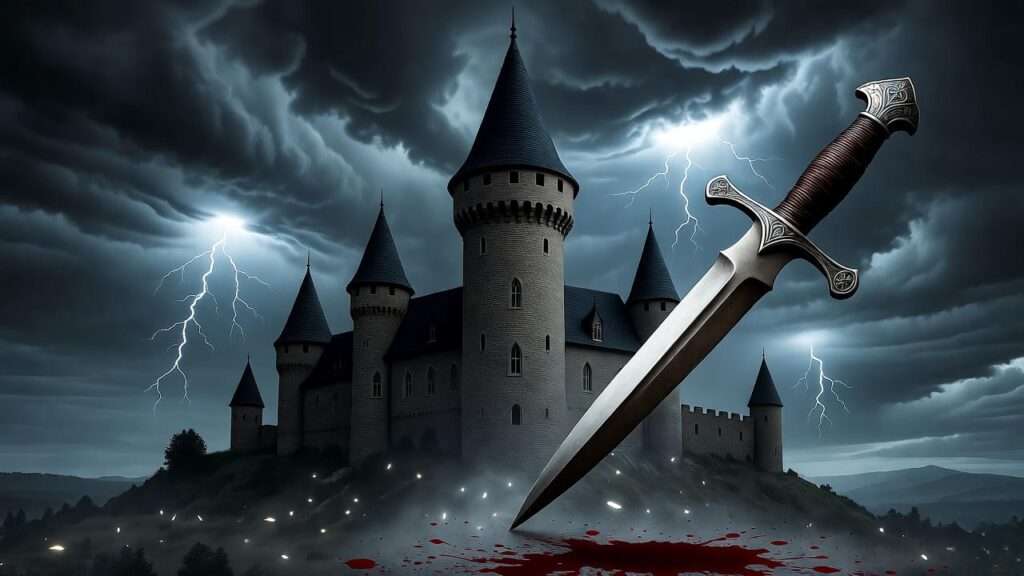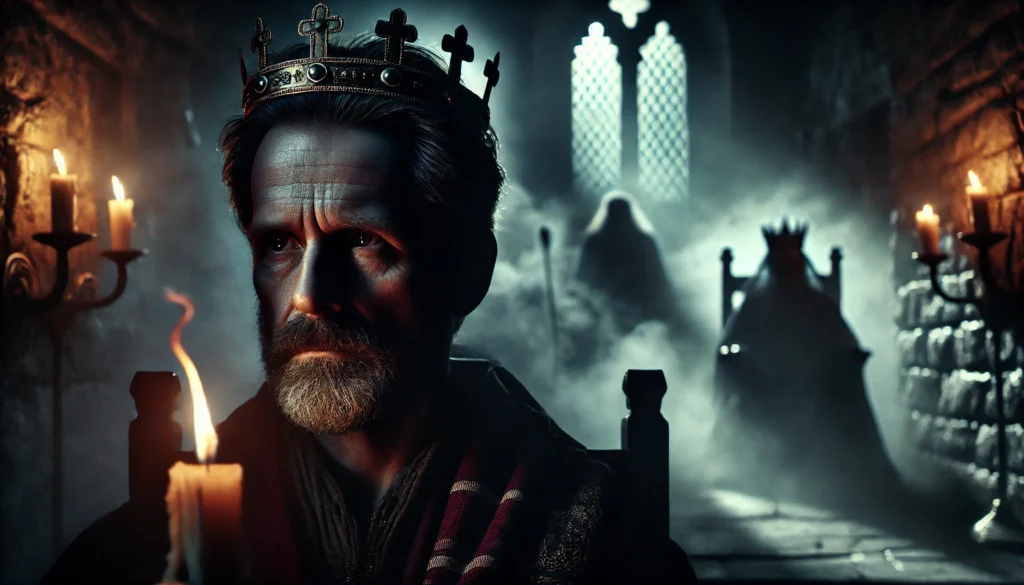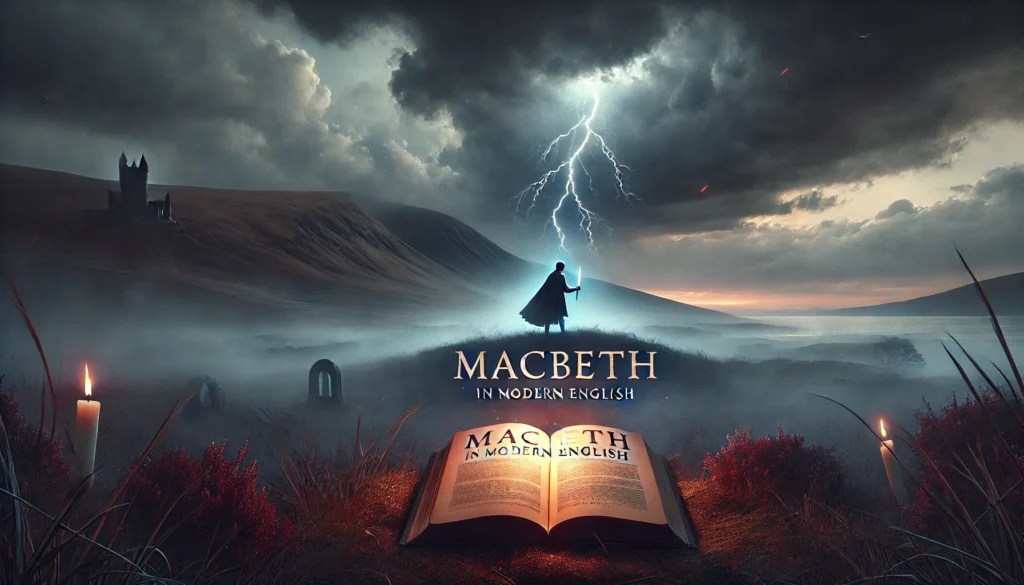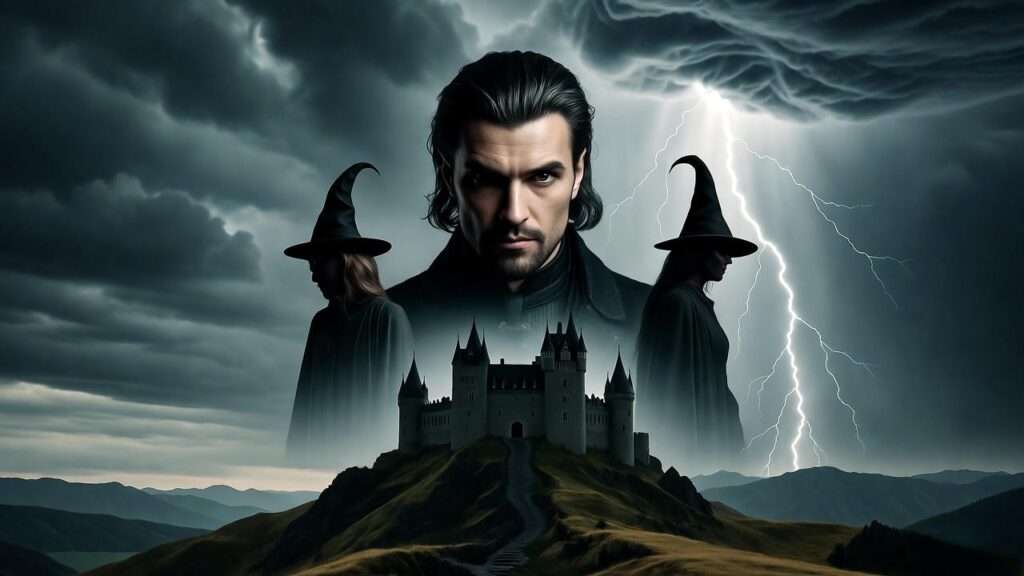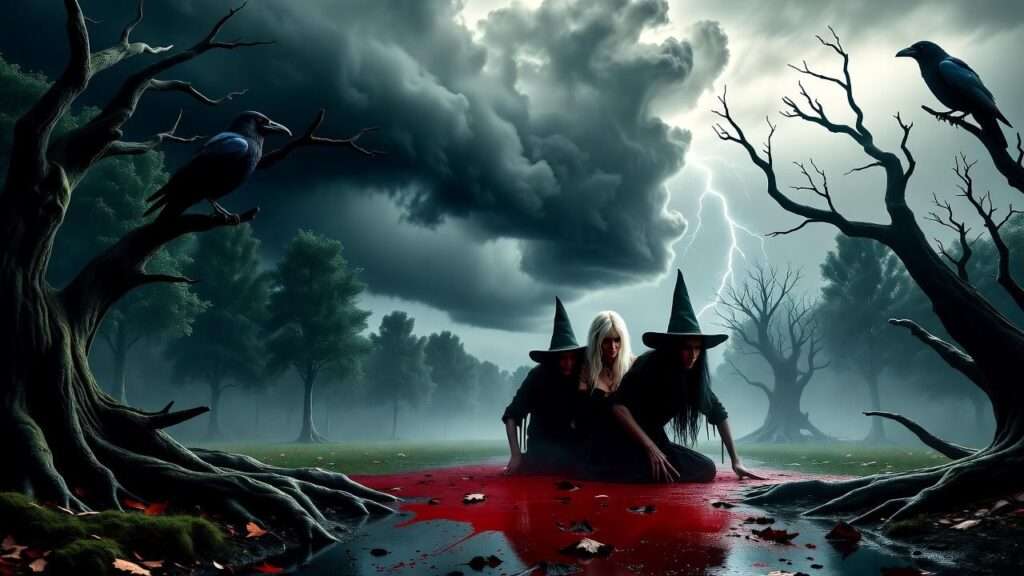What happens when ambition spirals into treachery under the cover of night? In Macbeth Act 2, William Shakespeare crafts a pivotal moment in his timeless tragedy, where the seeds of betrayal bloom into irreversible consequences. This Macbeth Act 2 summary delves into the heart of the play, where Macbeth’s moral descent begins with the murder of King Duncan. Whether you’re a student grappling with Shakespeare’s complex language, an educator seeking fresh insights, or a theater enthusiast exploring the play’s psychological depth, this article offers a comprehensive guide to Act 2’s events, themes, and characters. Expect a detailed analysis enriched with expert perspectives, practical applications, and connections to modern audiences, making this summary your go-to resource for understanding this critical turning point in Shakespeare’s masterpiece.
Overview of Macbeth Act 2: The Heart of the Tragedy
Setting the Stage for Act 2
To fully grasp Macbeth Act 2, we must first revisit Act 1, where the witches’ prophecy ignites Macbeth’s ambition, and Lady Macbeth’s ruthless resolve pushes him toward regicide. Act 1 ends with the couple plotting to murder King Duncan, setting the stage for Act 2’s dark deeds. This act unfolds in Macbeth’s castle at night, an atmosphere thick with secrecy, tension, and foreboding. The darkness mirrors the moral ambiguity of the characters’ actions, making Act 2 the moment where Macbeth crosses a moral threshold, committing to a path of bloodshed and guilt.
Key Themes Introduced in Act 2
Act 2 introduces themes that resonate throughout Macbeth: unchecked ambition, paralyzing guilt, betrayal, and the psychological toll of crime. These themes not only drive the narrative but also reflect universal human struggles, making the play timeless. Ambition propels Macbeth to murder, while guilt begins to haunt him immediately after. Betrayal—against Duncan, his king, and his own moral code—marks Macbeth’s transformation into a tragic figure. As renowned Shakespeare scholar Harold Bloom notes, “Act 2 is where Macbeth’s inner conflict becomes palpable, revealing the human cost of ambition” (Bloom, Shakespeare: The Invention of the Human). These themes lay the foundation for the chaos that engulfs the play.
Detailed Scene-by-Scene Summary of Act 2
Act 2, Scene 1: The Dagger Vision and Macbeth’s Inner Turmoil
Act 2 opens with Banquo and his son Fleance in the courtyard of Macbeth’s castle, unable to sleep due to unease. Banquo’s suspicion of the witches’ prophecy contrasts with Macbeth’s growing obsession. Alone, Macbeth delivers one of Shakespeare’s most famous soliloquies, hallucinating a dagger floating before him: “Is this a dagger which I see before me, / The handle toward my hand?” (2.1.33–34). This Macbeth dagger scene symbolizes his wavering resolve and burgeoning guilt, as the dagger leads him toward Duncan’s chamber. The soliloquy reveals Macbeth’s psychological torment—his ambition battles his fear of divine retribution and moral decay. The scene ends with Macbeth resolving to act, spurred by a bell signaling Lady Macbeth’s readiness.
This scene is a masterclass in Shakespeare’s ability to externalize internal conflict. The dagger, a hallucination born of guilt and ambition, foreshadows the psychological unraveling that defines Macbeth’s tragedy. For students searching for “Macbeth soliloquy analysis,” this scene offers rich material for exploring Shakespeare’s use of imagery and dramatic tension.
Act 2, Scene 2: The Murder of Duncan and Its Aftermath
The tension peaks in Act 2, Scene 2, as Macbeth commits the unthinkable: the murder of King Duncan. Returning from the deed, he is shaken, haunted by voices crying, “Sleep no more! / Macbeth does murder sleep” (2.2.35–36). These words encapsulate the loss of peace that will plague him henceforth. Lady Macbeth, ever pragmatic, urges him to wash the blood from his hands and frame Duncan’s guards for the crime. Yet her composure contrasts sharply with Macbeth’s unraveling state—he fixates on the blood and his inability to say “Amen,” signaling his spiritual alienation.
This scene shifts the dynamic between Macbeth and Lady Macbeth. While she orchestrates the cover-up, Macbeth’s guilt begins to consume him, setting the stage for their diverging paths. Literary critic Stephen Greenblatt observes, “In Act 2, Scene 2, Lady Macbeth’s cold pragmatism temporarily overshadows Macbeth’s moral anguish, but this is the beginning of their tragic divergence” (Greenblatt, Will in the World). For readers seeking “Macbeth Act 2 analysis,” this scene is crucial for understanding the psychological and moral stakes of the murder.
Act 2, Scene 3: Discovery of the Murder
The mood shifts abruptly in Act 2, Scene 3, with the porter’s drunken monologue, a moment of comic relief that doubles as a commentary on sin and damnation. The porter imagines himself as the gatekeeper of hell, a fitting metaphor given the treachery within the castle. The scene transitions to high drama when Macduff discovers Duncan’s body, exclaiming, “O horror, horror, horror!” (2.3.63). The court descends into chaos as Macbeth, feigning grief, kills the guards to silence them, raising Macduff’s suspicions. Dramatic irony permeates the scene, as the audience knows Macbeth’s guilt while the characters grapple with the shock.
The porter’s scene, often searched as “Macbeth porter scene,” serves a dual purpose: it lightens the tension while reinforcing the play’s themes of guilt and divine judgment. The discovery of Duncan’s murder marks a turning point, as the natural order—embodied by the king—is shattered, setting the stage for further chaos.
Act 2, Scene 4: The Aftermath and Suspicion
In the final scene of Act 2, an old man and Ross discuss unnatural events—darkness during the day, an owl killing a falcon—that mirror the moral upheaval of Duncan’s murder. Macduff reports that Duncan’s sons, Malcolm and Donalbain, have fled, casting suspicion on them. Meanwhile, Macbeth is named king, solidifying his ascent through treachery. The scene underscores the disruption of the natural order, a key Elizabethan belief tied to the divine right of kings. These omens foreshadow the chaos that will engulf Scotland under Macbeth’s rule.
This scene, rich with imagery of disorder, reinforces the consequences of Macbeth’s actions. For those researching “Duncan’s murder aftermath,” it highlights how Shakespeare uses supernatural elements to amplify the tragedy’s stakes.
Key Characters and Their Development in Act 2
Macbeth: From Hesitant Warrior to Guilty Murderer
Act 2 marks Macbeth’s transformation from a loyal thane to a guilt-ridden murderer. His soliloquy in Scene 1 reveals his hesitation, as he grapples with the moral and spiritual consequences of regicide. After the murder, his fixation on blood and inability to pray signal his descent into paranoia and isolation. Key quotes, like “Will all great Neptune’s ocean wash this blood / Clean from my hand?” (2.2.60–61), encapsulate his overwhelming guilt. This evolution makes Act 2 essential for analyzing Macbeth’s tragic arc.
Lady Macbeth: The Architect of Treachery
Lady Macbeth emerges as the driving force behind the murder, manipulating Macbeth and orchestrating the cover-up. Her chilling resolve—“My hands are of your color, but I shame / To wear a heart so white” (2.2.64–65)—contrasts with Macbeth’s torment. Yet, her apparent lack of guilt in Act 2 foreshadows her later psychological collapse, adding complexity to her character. For readers exploring “Lady Macbeth analysis,” this act showcases her ambition and temporary dominance over Macbeth.
Supporting Characters: Banquo, Macduff, and the Porter
Banquo serves as a moral foil to Macbeth, resisting the witches’ temptation and expressing unease in Scene 1. Macduff, introduced as a figure of integrity, becomes pivotal in Scene 3, as his discovery of Duncan’s body sets him on a path to oppose Macbeth. The porter, though minor, adds thematic depth with his hell-gate monologue, offering comic relief while reinforcing the play’s moral undertones. These characters enrich Act 2’s narrative, providing contrast and context for Macbeth’s actions.
Expert Insight: Critic A.C. Bradley notes, “Macbeth and Lady Macbeth’s contrasting reactions in Act 2 reveal the seeds of their eventual downfall—his guilt and her denial cannot coexist indefinitely”
Major Themes and Literary Devices in Act 2
Guilt and Psychological Torment
Act 2 of Macbeth vividly portrays the psychological toll of guilt, particularly through Macbeth’s hallucinations and obsessive behavior. The dagger vision in Scene 1 and his fixation on blood in Scene 2—“Will all great Neptune’s ocean wash this blood / Clean from my hand?” (2.2.60–61)—illustrate his descent into torment. Lady Macbeth, though seemingly unperturbed, plants the seeds for her later unraveling, as her dismissal of guilt contrasts with Macbeth’s visceral reaction. Shakespeare’s use of blood imagery amplifies this theme, transforming it into a tangible symbol of moral corruption. For students searching “Macbeth themes,” guilt in Act 2 is a cornerstone for understanding the play’s psychological depth.
Ambition and Moral Corruption
Ambition drives the events of Act 2, as Macbeth and Lady Macbeth sacrifice morality for power. The murder of Duncan marks the point of no return, where ambition overrides loyalty and ethics. This theme resonates with modern audiences, reflecting dilemmas in politics, business, or personal life where ambition leads to ethical compromises. Shakespeare illustrates how ambition, unchecked, corrupts both the individual and society, as seen in the unnatural events of Scene 4. For those exploring “Shakespeare tragedy,” Act 2 exemplifies how ambition fuels Macbeth’s tragic arc.
Symbolism and Imagery
Shakespeare’s masterful use of symbolism in Act 2 deepens the play’s impact. The dagger in Scene 1 symbolizes Macbeth’s guilt and the inevitability of his actions, while blood recurs as a motif of irreversible sin. Sleep, disrupted by Duncan’s murder, represents peace and innocence, as seen in Macbeth’s lament, “Sleep no more!” (2.2.35). Darkness pervades the act, reflecting moral and cosmic disorder. These symbols, often searched as “Macbeth symbolism,” create a rich tapestry that enhances both the emotional and intellectual experience of the play.
Dramatic Techniques
Shakespeare employs several dramatic techniques in Act 2 to heighten tension and engage audiences. The soliloquy in Scene 1 externalizes Macbeth’s inner conflict, drawing viewers into his psyche. Dramatic irony in Scene 3, where the audience knows Macbeth’s guilt while the characters do not, amplifies suspense. The porter’s scene uses comic relief to break the tension while reinforcing themes of sin and judgment. These techniques, ideal for “Macbeth literary devices” searches, showcase Shakespeare’s skill in blending psychological depth with theatricality.
Historical and Cultural Context of Act 2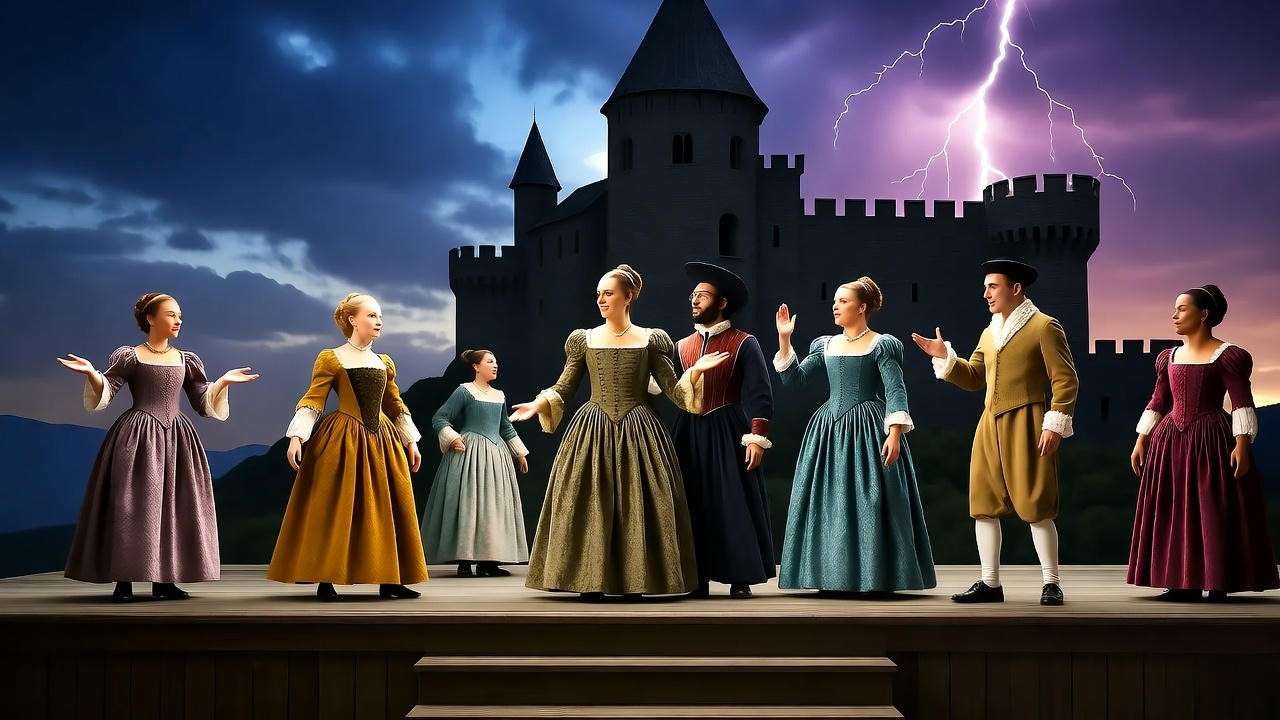
Shakespeare’s Audience and the Divine Right of Kings
For Elizabethan audiences, Duncan’s murder in Act 2 was shocking, as it violated the divine right of kings—a belief that monarchs were God’s chosen representatives. This act of regicide, committed in Macbeth’s castle, would have been seen as an affront to both divine and social order. Written around 1606, Macbeth reflects the political climate of the time, particularly the Gunpowder Plot of 1605, a failed attempt to assassinate King James I. Shakespeare’s portrayal of regicide and its consequences likely served as a cautionary tale for his audience. Historian James Shapiro notes, “Macbeth spoke directly to Jacobean fears of treason and instability, with Act 2’s murder as its dramatic epicenter” (1606: William Shakespeare and the Year of Lear).
Relevance to Modern Readers
Act 2’s themes of ambition, guilt, and betrayal remain strikingly relevant today. The psychological complexity of Macbeth’s descent mirrors modern struggles with ambition and moral compromise, whether in corporate scandals or personal betrayals. Adaptations like Joel Coen’s 2021 film The Tragedy of Macbeth emphasize Act 2’s intensity, using stark visuals to highlight the dagger scene and Duncan’s murder. For readers searching “Macbeth modern relevance,” Act 2 offers timeless insights into human nature and the consequences of unchecked desire.
Why Act 2 Matters: Lessons and Takeaways
Moral and Ethical Reflections
Act 2 raises profound moral questions: Can ambition justify betrayal? Does guilt offer redemption, or is it merely a punishment? Macbeth’s torment and Lady Macbeth’s initial denial invite readers to reflect on their own ethical boundaries. These questions resonate with students, professionals, and anyone navigating ambition in a competitive world. By examining Macbeth’s choices, readers can explore the balance between ambition and integrity, making Act 2 a powerful lens for personal growth.
Educational Applications
For students studying Macbeth for exams or essays, Act 2 is a goldmine of analytical material. The dagger soliloquy offers rich opportunities to explore imagery and character development, while the murder scene provides key quotes for discussing guilt and power dynamics. Suggested essay topics include:
- How does Shakespeare use symbolism in Act 2 to convey guilt?
- Compare Macbeth and Lady Macbeth’s reactions to Duncan’s murder.
- Analyze the role of dramatic irony in Act 2, Scene 3.
For classroom or book club discussions, consider questions like: “Does Lady Macbeth bear more responsibility than Macbeth for Duncan’s murder?” or “How does the porter scene enhance the play’s themes?” These tools, relevant for “Macbeth study guide” searches, empower students to engage deeply with the text.
Theatrical and Cinematic Interpretations
Act 2 has inspired countless interpretations, from Roman Polanski’s gritty 1971 film to Patrick Stewart’s chilling 2010 PBS performance. Directors often emphasize the dagger scene’s psychological intensity, using lighting or sound to evoke Macbeth’s turmoil. In Coen’s 2021 adaptation, Denzel Washington’s haunting delivery of the soliloquy underscores Act 2’s emotional weight. For theater enthusiasts searching “Macbeth adaptations,” these examples highlight how Act 2’s dramatic power translates across mediums.
Frequently Asked Questions (FAQs)
What is the significance of the dagger in Act 2, Scene 1? The dagger symbolizes Macbeth’s guilt and the inevitability of his actions. As a hallucination, it reflects his psychological turmoil, with the soliloquy revealing his fear and ambition. This moment, often searched as “Macbeth dagger significance,” is pivotal for understanding his tragic descent.
Why does Lady Macbeth take charge in Act 2, Scene 2? Lady Macbeth’s pragmatism drives her to orchestrate the murder’s cover-up, framing the guards and urging Macbeth to suppress his guilt. Her dominance in this scene highlights her ambition and temporary control over Macbeth, key for “Lady Macbeth analysis” searches.
How does the porter scene contribute to the play? The porter’s monologue in Scene 3 provides comic relief while reinforcing themes of sin and hell. By likening the castle to a gate of hell, it underscores the moral consequences of Macbeth’s actions, making it a focal point for “Macbeth porter scene” queries.
What are the key themes in Macbeth Act 2? Act 2 explores guilt, ambition, betrayal, and the disruption of order. Through imagery like blood and darkness, Shakespeare illustrates the psychological and cosmic fallout of Macbeth’s actions, ideal for “Macbeth themes” searches.
Act 2 of Macbeth is the tragic turning point where ambition leads to bloodshed, guilt festers, and the natural order crumbles. From the haunting dagger soliloquy to the chaotic discovery of Duncan’s murder, this act encapsulates Shakespeare’s genius in weaving psychological depth with dramatic tension. Whether you’re a student analyzing key quotes, an educator seeking discussion prompts, or a theatergoer exploring iconic scenes, this Macbeth Act 2 summary offers a comprehensive guide to the play’s pivotal moments. Dive deeper into Macbeth by reading the full text, watching a modern adaptation, or sharing your thoughts on Macbeth’s moral dilemma in the comments below. How does Act 2 resonate with you today?

